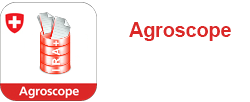The vineyard habitat has faced considerable challenges over the past century, primarily due to the intensification of viticulture. Fungal diseases and pests have necessitated an increased reliance on plant protection products (PPPs), particularly fungicides, posing a growing threat to the flora and fauna of the vineyards. The resource project Promotion of endangered flora in vineyards pursues the goal of restoring the value of vineyards as habitats. One measure within this project involves the sowing of native wildflowers in vineyard inter-rows. However, this raises questions regarding the impact of PPPs on the pollinator populations that get attracted to these enhanced floral resources. Especially the effect of the widely used fungicides on pollinators is still largely unknown and not well investigated. This study focused on assessing the potential risks of PPPs on wild bees - an invaluable group of pollinators. We examined the exposure of wild bees to PPPs in vineyards, considering whether the quantities applied had the potential to cause toxic effects. Additionally, we investigated whether the abundance and diversity of wild bees in vineyards with flower strips were more negatively affected by increasing toxic risks resulting from PPP applications compared to vineyards with spontaneous flora. A crucial aspect of this investigation is to determine if the sown inter-rows, while being beneficial in terms of food resources, could inadvertently serve as ecological traps for wild bees. Furthermore, we assessed the reliability of vane traps in accurately representing wild bee abundance in vineyards, as well as the transferability of the vane trap method used for wild bee surveys to other non-bee pollinator groups. Our findings suggest to rule out low toxic risk for many of the applied PPPs. Taking into account the toxic risk from oral exposure, the occurrence of bumblebees tends to be affected by an ecological trapping effect posed by the sown vineyard rows. We did not find clear evidence of an ecological trap in relation to solitary bee diversity, but we do not rule it out, as it seems reasonable that immigration may have had an impact. Our findings are specific to wild bees and should be transferred to non-bee pollinators only with caution, given the observed discrepancies in the abundance of non-bee pollinators between vane traps and transect walks. Or results highlight the complexity of the vineyard habitat, as many factors need to be considered in order to examine the risk of PPPs to pollinators in sown vineyard inter-rows. We propose that, in the context of investigating potential ecological traps, it is crucial to include flower supply and diversity. These elements, among others, may offer insights into how the adverse effects of PPPs can potentially be offset or mitigated.
Porfido P.
Risk of plant protection products to wild bees in vineyards with sown wildflower strips compared to vineyards with natural vegetation: Master's thesis.
ETH Zürich. 2023, 40 pp.
Download inglese (1567 kB)
ID pubblicazione (Codice web): 55682 Inviare via e-mail
Precedenti progetti










